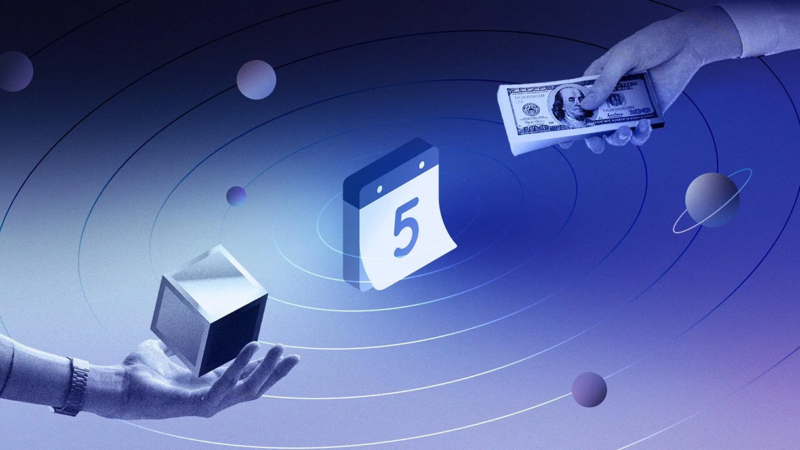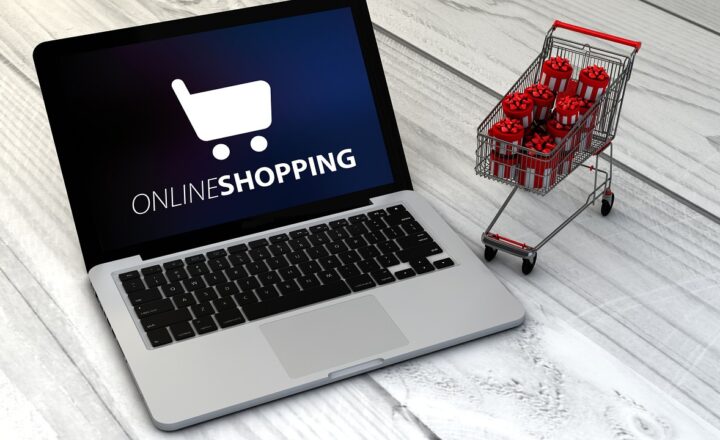The Rise of Subscription Services: Why We’re Paying Monthly for Everything
October 24, 2024

Subscription services have become a defining feature of the modern economy. From streaming platforms like Netflix and Spotify to meal kits, fitness apps, software tools, and even razors, subscription models are changing the way we consume products and services. What started as a way to access digital content has now expanded into nearly every sector of the market. The subscription economy has grown exponentially, with consumers now opting to pay monthly fees for everything from entertainment and groceries to personal care and professional services.
But why are we so willing to subscribe to products and services instead of owning or purchasing them outright? In this article, we’ll explore the reasons behind the rise of subscription services, the benefits for both businesses and consumers, and the potential downsides of the growing subscription economy.
1. The Evolution of Subscription Services
The subscription model isn’t new—it has been around for centuries in various forms. However, its modern resurgence can be traced back to the digital revolution and the rise of streaming services.
- Traditional Subscription Models: The concept of subscriptions dates back to newspapers and magazines, where consumers paid a recurring fee for regular delivery. Subscriptions ensured consistent revenue for publishers and convenience for consumers, but the model was largely limited to specific industries.
- The Birth of Digital Subscriptions: The advent of the internet and the proliferation of digital content sparked the next wave of subscription models. Companies like Netflix and Spotify transformed how we consume entertainment by offering unlimited access to vast libraries of content for a fixed monthly fee. This model proved highly attractive to consumers, as it eliminated the need to purchase individual movies, albums, or TV shows.
- Expansion Beyond Digital: Over the past decade, the subscription model has expanded beyond digital content to include physical goods and services. Subscription boxes, such as Dollar Shave Club, Birchbox, and Blue Apron, introduced the idea of receiving curated products delivered directly to your door. Today, everything from clothing to pet supplies to meal kits can be obtained through a subscription.
The evolution of subscription services has been driven by changes in consumer preferences and technological advancements that make recurring payments more convenient and seamless.
2. Why Are Subscription Services So Popular?
The rise of subscription services can be attributed to a variety of factors that appeal to both consumers and businesses. Let’s explore some of the key reasons why subscriptions have become so popular.
- Convenience and Customization: One of the primary reasons consumers opt for subscription services is the convenience they offer. With a subscription, products and services are delivered or made available automatically, eliminating the need to remember to reorder or make individual purchases. Additionally, many subscription services offer personalization, allowing consumers to customize their subscriptions based on their preferences or needs.
- Affordability and Access: Subscriptions often provide access to high-quality products or premium services at a lower upfront cost than buying them outright. For example, instead of purchasing software or media outright, consumers can access a vast library for a small monthly fee. This affordability makes high-quality services more accessible to a wider audience.
- Recurring Revenue for Businesses: For companies, subscription models provide a predictable and recurring revenue stream. This steady income allows businesses to better plan and scale their operations. Additionally, subscription services foster customer loyalty, as consumers are more likely to stick with a service they subscribe to regularly.
- Product Discovery and Curation: Many subscription boxes are designed around the concept of discovery, where consumers receive new or curated products they might not have otherwise tried. For instance, beauty subscription services send out sample-sized products for consumers to test, creating an opportunity for brand discovery and loyalty.
Subscription services offer consumers flexibility, affordability, and convenience, while providing businesses with predictable revenue and customer engagement.
3. The Types of Subscription Services
Subscription services have proliferated across a wide range of industries. Here are some of the most popular categories of subscription services today.
- Streaming Media: Platforms like Netflix, Hulu, Spotify, and Apple Music dominate the media landscape, allowing consumers to stream unlimited content for a flat monthly fee. With streaming services, users no longer need to purchase individual movies, TV shows, or music albums.
- Software-as-a-Service (SaaS): Instead of buying software outright, businesses and individuals increasingly subscribe to software platforms through SaaS models. Companies like Microsoft, Adobe, and Salesforce provide cloud-based software for a monthly or annual fee, offering regular updates and support without the need for traditional software installation.
- Subscription Boxes: Curated subscription boxes have taken off in industries like beauty, fashion, food, and wellness. Brands like Birchbox, HelloFresh, and FabFitFun offer monthly deliveries of curated products, often tailored to customer preferences.
- Meal Kits and Grocery Deliveries: Meal kit services such as Blue Apron, HelloFresh, and Home Chef deliver pre-portioned ingredients and recipes to subscribers, making home cooking more convenient. Similarly, grocery delivery services like Amazon Fresh and Instacart offer subscription plans for recurring grocery deliveries.
- Fitness and Wellness: Fitness apps, online classes, and wellness programs are now available through subscription models. Companies like Peloton and ClassPass offer access to live or on-demand workouts for a monthly fee, allowing users to maintain their fitness routines from home.
- Personal Care Products: Subscription services for personal care items, such as Dollar Shave Club and Billie, allow consumers to receive regular shipments of razors, skincare products, and other essentials.
From entertainment to everyday essentials, subscription services are reshaping how we consume and experience a wide range of products and services.
4. The Benefits of Subscription Services for Consumers
Subscription services offer numerous benefits to consumers, making them an attractive option for a variety of needs.
- Cost Savings: Many subscription services offer savings over time compared to traditional purchasing methods. For example, subscribing to a music streaming service is often more affordable than purchasing individual albums or songs.
- Convenience and Time Savings: With subscription services, products are delivered or made available automatically, saving consumers time and effort. Whether it’s groceries, entertainment, or personal care products, the convenience of having items delivered regularly is a significant benefit.
- Access to Premium Content: Subscriptions often give consumers access to premium content or services that would otherwise be out of reach. For instance, subscribing to Adobe Creative Cloud gives users access to professional-grade software that would be expensive to purchase outright.
- Personalization and Curation: Many subscription services offer personalized experiences based on consumer preferences. This customization ensures that consumers receive products or content that align with their tastes and needs.
The convenience, affordability, and personalization of subscription services have made them a popular choice for modern consumers.
5. The Benefits of Subscription Services for Businesses
Subscription models provide significant advantages for businesses, helping them grow and maintain strong customer relationships.
- Predictable Revenue: One of the most significant benefits of subscription services for businesses is the predictability of revenue. Unlike traditional sales models, where income fluctuates based on one-time purchases, subscriptions provide a steady stream of recurring income.
- Customer Loyalty: Subscription services encourage customer loyalty and long-term relationships. Once customers are subscribed, they are more likely to continue using the service, leading to lower churn rates and higher lifetime value.
- Scalability: Subscription services are often highly scalable, especially in digital industries. Businesses can grow their subscriber base without needing to significantly increase their infrastructure, making it easier to scale and expand.
- Data-Driven Insights: Subscription services allow businesses to gather valuable data on customer preferences, usage patterns, and behavior. This data can be used to improve services, personalize offerings, and create targeted marketing strategies.
For businesses, subscription models offer a sustainable path to growth, customer retention, and the ability to innovate based on consumer feedback.
6. The Downsides of Subscription Services
While subscription services offer many benefits, they also come with potential downsides that consumers and businesses need to consider.
- Subscription Fatigue: As more companies adopt subscription models, consumers may experience subscription fatigue. Juggling multiple subscriptions for different services can lead to overwhelming costs and management, causing some consumers to cancel or switch services.
- Hidden Costs: Some subscription services may introduce hidden costs, such as additional fees for premium features or price increases over time. Consumers need to carefully monitor their subscriptions to avoid unexpected expenses.
- Over-Reliance on Subscriptions: Businesses that rely too heavily on subscriptions may face challenges if customers begin to cancel or switch services. Additionally, relying solely on subscription revenue may limit a company’s flexibility in adapting to market changes.
While the subscription economy offers convenience and recurring revenue, both consumers and businesses need to navigate potential challenges to avoid downsides.
7. The Future of Subscription Services
As the subscription economy continues to grow, it’s clear that this model is here to stay. However, the future of subscription services will likely see continued innovation and evolution.
- Hybrid Models: Some companies are exploring hybrid models that combine one-time purchases with subscription services. This allows consumers to choose between ownership and recurring access, depending on their needs and preferences.
- Subscription Ecosystems: Companies are increasingly building ecosystems of subscription services that offer complementary products. For example, Apple’s subscription offerings now include Apple Music, Apple TV+, Apple Arcade, and iCloud, creating a comprehensive digital ecosystem for consumers.
- Sustainability and Ethical Considerations: As consumers become more environmentally conscious, subscription services will need to prioritize sustainability. This could include reducing packaging waste in subscription boxes or offering digital alternatives to physical products.
The future of subscription services will likely involve more customization, flexibility, and a focus on ethical and sustainable practices.
Conclusion: The Rise of the Subscription Economy
The rise of subscription services has transformed the way we consume products and services. From entertainment and software to meal kits and personal care, the subscription economy offers unparalleled convenience, affordability, and access to premium experiences. For businesses, the subscription model provides predictable revenue, customer loyalty, and valuable data insights.
However, as more companies adopt this model, both consumers and businesses must navigate potential challenges such as subscription fatigue and hidden costs. As we move forward, the subscription economy is likely to evolve, offering new opportunities for innovation and growth. Whether you’re a consumer or a business owner, the subscription model is shaping the future of how we engage with the world around us.







